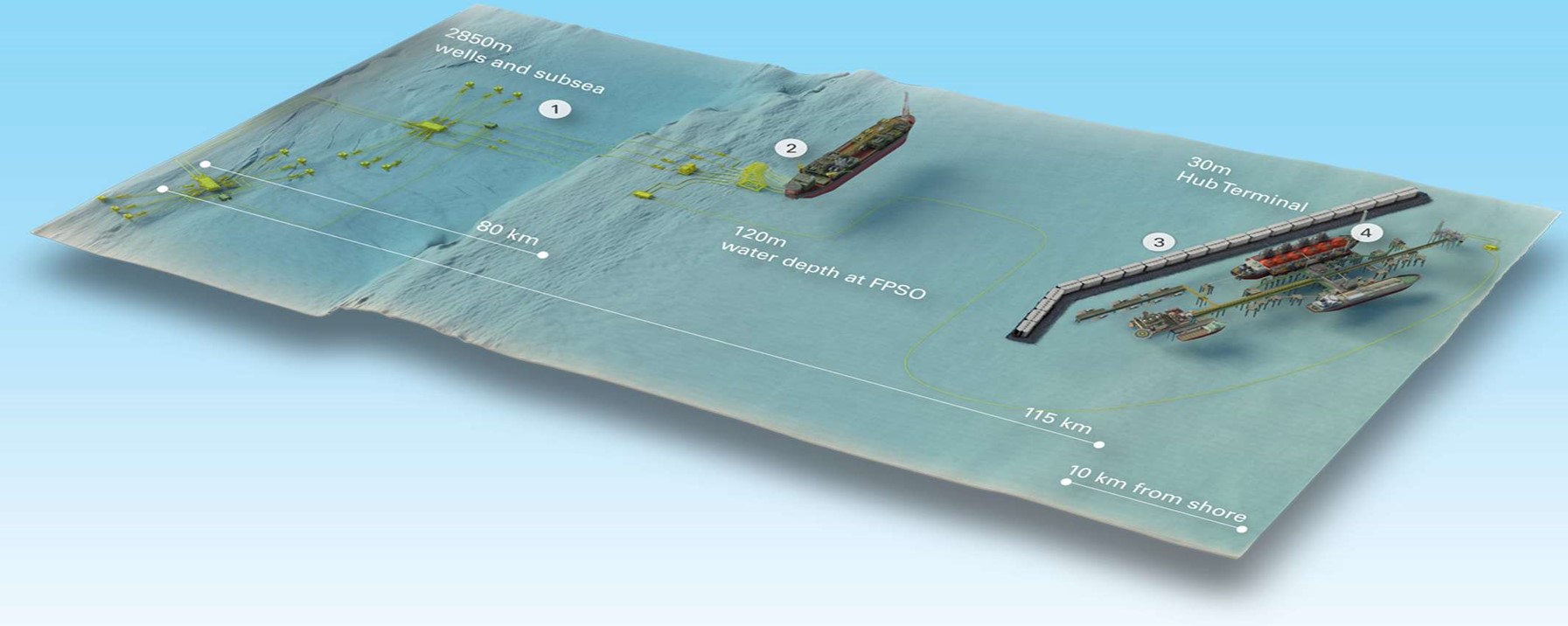BP’s Greater Tortue Ahmeyim FLNG project located offshore Mauritania and Senegal remains on track to achieve its first gas by the end of this year, according to project partner Kosmos Energy.
Texas-based Kosmos said in its quarterly results report that the construction work on the first phase of the Greater Tortue Ahmeyim LNG project “continues to make good progress”.
The project includes the conversion of Golar LNG’s Gimi to a floating LNG producer at Singapore’s Keppel shipyard, as well as the construction of an FPSO which has already left the yard in China.
Kosmos said that the FLNG construction and mechanical completion activities are finishing and commissioning work is underway.
Moreover, the partners expect the converted FLNG to depart from the yard mid-year 2023, the firm said.
The 2.5 mtpa Gimi FLNG will serve BP’s Greater Tortue Ahmeyim project under a 20-year deal.
Golar said in February that the conversion was about 92 percent technically complete.
FPSO to arrive end of Q2
The floating production, storage and offloading (FPSO) unit left Cosco Shipping Heavy Industry’s yard in Qidong, China in January this year.
It is currently in Singapore and “arrival on location offshore Mauritania/Senegal is expected around the end of the second quarter of 2023 when the hookup and commissioning work will commence,” Kosmos said.
Following arrival at the project site and completion of commissioning activities, the FPSO will process natural gas – removing condensate, water, and other impurities – before exporting it by pipeline to the project’s FLNG facilities, 10km offshore.
With eight processing and production modules, the FPSO will process around 500 million standard cubic feet of gas per day.
The FLNG will liquefy majority of the gas, enabling export to international markets, while some of the supplies will help meet growing demand in the two host countries, BP previously said.
Besides the FPSO, Kosmos said that laying of the deepwater section of the pipeline from the field to the unit is currently underway.
“This will be followed by the installation of the infield flowlines and subsea structures. Timely execution of this subsea work scope is the critical path to first gas by the end of the year,” the firm said.
Second phase
In February, BP and partners confirmed the development concept for the second phase of the GTA LNG project that they will take forward to the next stage of evaluation.
The partnership, composed of BP, Petrosen, SMH, and Kosmos will evaluate a gravity-based structure (GBS) as the basis for the GTA Phase 2 expansion project with total capacity of between 2.5-3 million tonnes per annum.
The concept design will also include new wells and subsea equipment, integrating with and expanding on existing GTA infrastructure.
In addition, the partners will consider powering liquefication using electricity to help drive operational emissions lower.
Kosmos said that the partners are finalizing decisions to move the project into pre-FEED.

